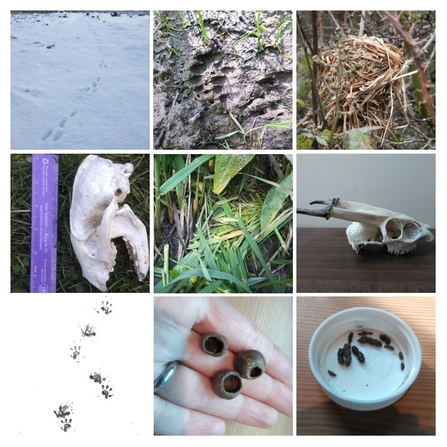As we enter National Mammal Week it’s a good time to discuss the importance of tracks and signs. Many of our British mammals are nocturnal (active mainly at night) and of those that come out during the day many have learnt to be wary of humans and run or hide when we approach. However, mammal, and many other creatures, can leave us clues to their presence even when we don’t see them.
Upon hearing tracks & signs most people first think of footprint, but there are many different types of sign animals can leave behind. I was recently introduced to the mnemonic FEATHER to remember them all:
- Footprints – Including number and arrangement of pads, presence of claw marks, size and gait pattern
- Excreta – Droppings and pellets. Consider location, size, shape, contents, even smell & texture for some species!
- Activity – Scratches caused by claws or antlers, wallows, etc.
- Trails – Worn paths, tunnels through vegetation
- Homes – burrows, nests, forms,... Location, size, shape and construction can indicate who's home it is.
- Eating signs – bones, feathers, nuts, leaves, etc. For example the tooth marks on gnawed nuts can indicate which small mammal has been eating them.
- Remains – Bones, especially skulls, can are useful for identification, Also check low strand of wire fences for tufts of fur.


